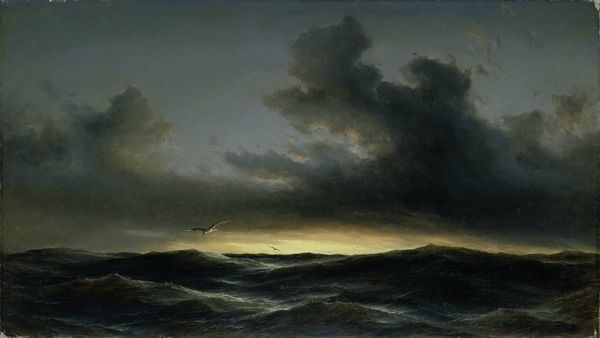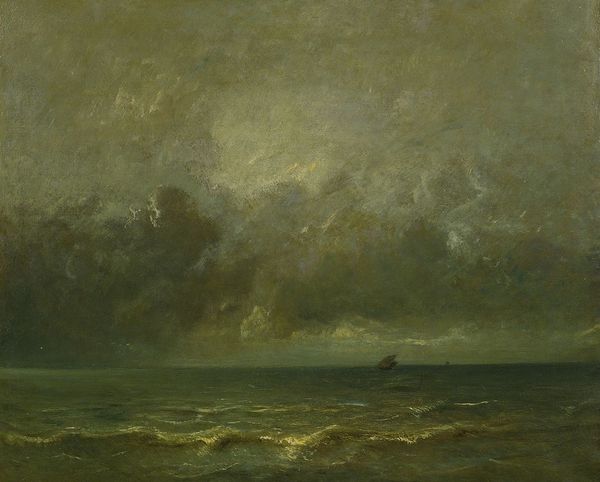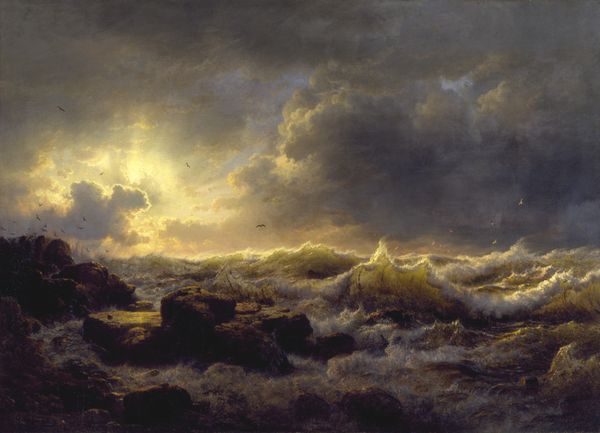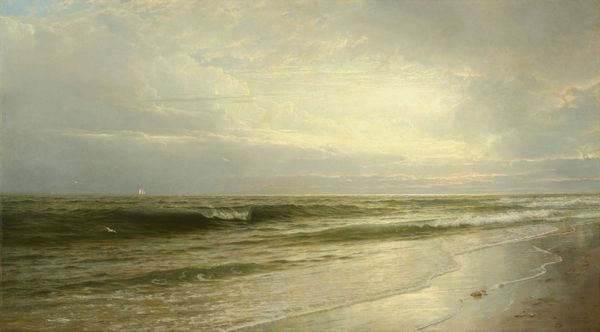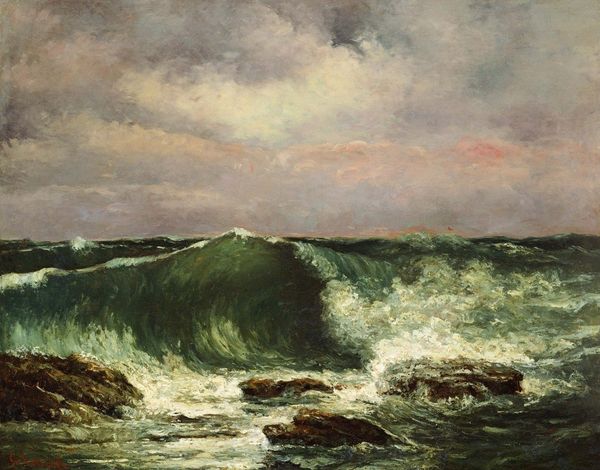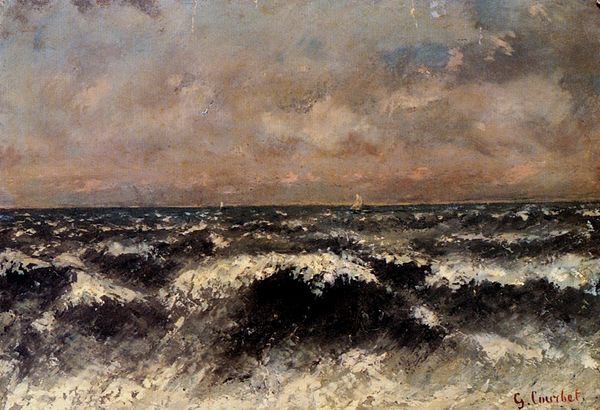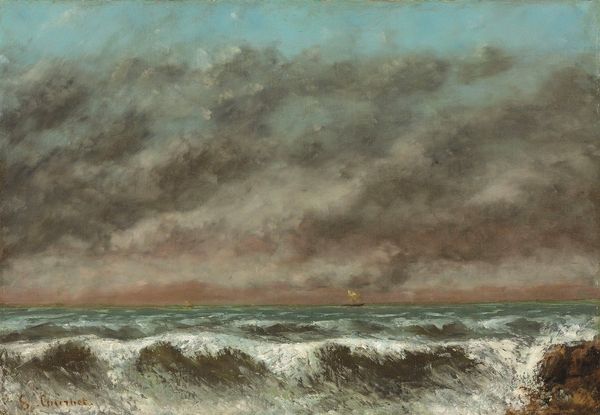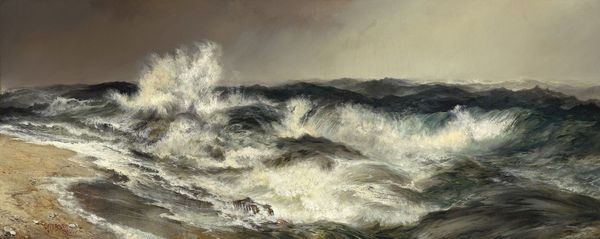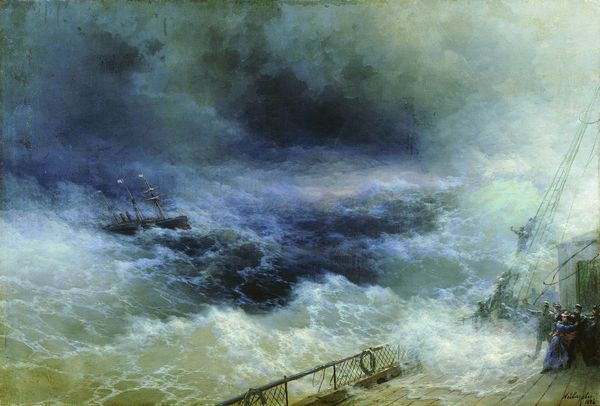
Copyright: Public domain
Editor: This is Aivazovsky's "The Black Sea" painted in 1881. Looking at this dramatic seascape rendered in oil, I’m struck by a feeling of foreboding – the immense power of nature seems ready to swallow everything. What social narratives do you see present in this piece? Curator: That sense of foreboding is key. Let’s consider the socio-political context: the late 19th century, Tsarist Russia expanding its power, the Black Sea as a site of strategic importance and military conflict, a gateway to trade and, crucially, a space where Russia exerted its imperial control. Aivazovsky, as an Armenian artist working within this system, often depicted the sea as sublime, untamable. But is that untamable nature resisting Russian authority or amplifying its dominance? How might we interpret that in light of, for instance, feminist and postcolonial theory, which teach us to scrutinize power structures inherent even in seemingly "natural" depictions? Editor: I hadn't considered that tension between the sublime and imperial power. Is the painting therefore celebrating Russian naval power or is it showing the insignificance of humanity in the face of it? Curator: It’s probably doing both. And it speaks to Aivazovsky’s complicated position, his negotiation between artistic expression and political reality, which raises vital questions. How did the narratives he presented challenge or perpetuate existing cultural inequalities? What is romanticizing about such unequal, harmful contexts of geopolitical expansion, and the military conflicts required to secure it? Editor: That's fascinating. It complicates my understanding and forces me to consider the deeper social meanings behind the seascape. Thanks! Curator: It does the same for me too! This exercise proves that an artwork never simply *is.* Its interpretation demands that we discuss history.
Comments
No comments
Be the first to comment and join the conversation on the ultimate creative platform.
